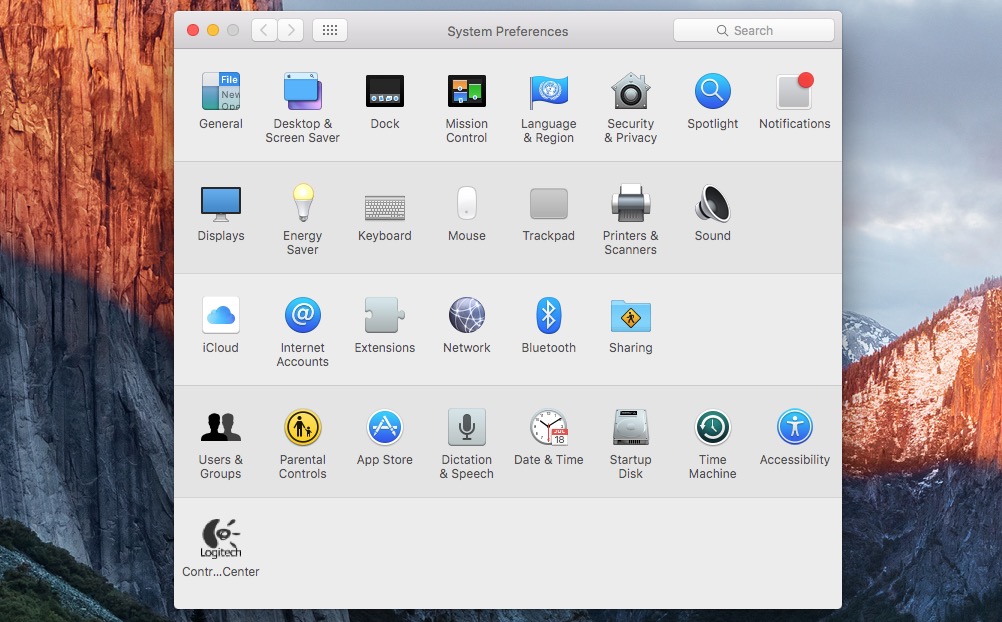
On this page:
OS X El Capitan supports two methods of installation. The default method is an upgrade install, which will upgrade your Mac to El Capitan while preserving all of your user data and apps.This is the most common means of upgrading the operating system and is recommended when your Mac is in good shape and having no problems. Remember, this method is not the same as a clean install, and it only reinstalls the version of OS X that is currently running on the Mac (shown here with El Capitan), whereas Internet Recovery will reinstall the version of OS X that shipped with the Mac (in this case it would have been Yosemite) instead. Obviously the versions of OS X will.
- Reinstall El Capitan on a computer alreadyrunning it
Install Os X El Capitan
Upgrade from previous versions to OS X 10.11 (El Capitan)

- Jul 18, 2016 Download OS X El Capitan 10.11.6 Combo Update. This update is recommended for all OS X El Capitan users. The OS X El Capitan v10.11.6 Update improves the stability, compatibility, and security of your Mac, and is recommended for all users.
- OS X El Capitan Install DMG. This is the Install DMG of OS X El Capitan, downloaded from Apple's website just before this upload. This is for archiving purposes, just in case Apple decides to remove the download, so people can still download this in the future.
- Make sure you have Install OS X El Capitan.app in your Application Folder; Select 'On an external drive' on the main MCPF window. Then, choose the disk you want to install the El Capitan installer on. Click install and prompt your password. Boot the computer you want to install El Capitan on with 'alt' held and select your USB drive.
Install Os X El Capitan No Disk To Select
- From the Apple menu, select App Store....
- When the App Store opens, search for and download El Capitan. If you don't already have an Apple ID, you'll need to create one. You can monitor the download process in the 'Purchased' section of the App Store.
- Once the download is complete, the installer should automatically open.
If it doesn't, or you don't want to complete the installation at this time, you can come back later and double-click Install OS X El Capitan in your
Applicationsfolder.Within the installer, click Continue, agree to the license agreement, and then choose the disk where you want to install El Capitan.
After you begin the installation, your computer may need to restart more than once before finishing, and then you may be asked to enter basic information.
- From the Apple menu, select App Store..., and then install any available updates.
Reinstall El Capitan on a computer already running it
Download El Capitan To Usb

Reinstall while keeping files, applications, and settings
Install Os X El Capitan App Download
- Restart your computer, and immediately hold down
command-runtil the gray Apple logo appears. - If prompted, select your main language and then click the arrow.
- Click Reinstall OS X, and then Continue. Follow the instructions on the screen, and then choose your hard disk. Click Install, and enter your Apple ID information if prompted.
- When the installation is complete, select App Store... from the Apple menu, and install any available updates.
Reinstall while erasing everything on your computer
Download Os X El Capitan
Restart your computer, and immediately hold down
command-runtil the gray Apple logo appears.- If you see a screen asking you to select your main language, choose it, and then click the arrow.
- Click Disk Utility, and then Continue.
- In Disk Utility:
- Click your hard disk in the left column, and then click the Erase tab.
- Next to 'Format:', make sure OS X Extended (Journaled) is selected. In the 'Name:' field, give your disk a name. Click Erase.
- Once it's completed, quit Disk Utility.
- Click Reinstall OS X, and then Continue:
- Follow the instructions on the screen, and then choose your hard disk.
- Click Install. If prompted, enter your Apple ID information.
- Once the installation is complete, you'll be asked to enter basic information, and have the option to transfer data from another computer or backup.
- From the Apple menu, select App Store, and then install any available updates.